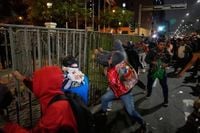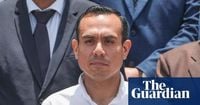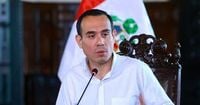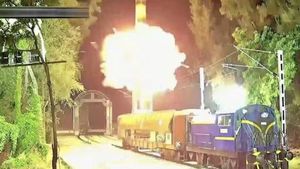On October 22, 2025, the streets of Lima and Callao awoke to a new reality: soldiers and police in greater numbers than usual, patrolling corners, standing watch near markets, and making their presence felt in a city on edge. It was the first day of a sweeping state of emergency declared by Peru’s newly sworn-in President, José Jerí, a move aimed at stemming a tide of violent crime and public unrest that has rattled the nation’s confidence and shaken its political foundations.
The decree, announced in a late-night video message on October 21, suspended several constitutional rights, including freedom of assembly and protest, and introduced strict new measures. Among them: a ban on two adults riding together on a motorcycle, limits on visits to prisoners, and the authority to cut power to prison cells (except for essential lighting). For many Peruvians, these restrictions marked a dramatic escalation, but for President Jerí, they were a necessary reset. "Today, we start to change the narrative about insecurity in Peru," he declared, promising a shift "from the defense to the offensive."
The stakes are high. According to the Associated Press, Peru has seen a sharp rise in crime in recent years. Homicides climbed from 676 cases in 2017 to 2,082 in 2024, and extortion complaints soared from 2,305 in 2020 to more than 21,700 last year—painful numbers that have left the country’s working class, in particular, feeling exposed and abandoned. Between January and September of this year alone, there were 188 more homicides reported than during the same period in 2024. It’s little wonder that the mood in Lima is tense, with many residents skeptical that another state of emergency will bring lasting change.
Peru’s political landscape has been anything but stable. Jerí assumed the presidency on October 10, after lawmakers ousted his predecessor, Dina Boluarte, citing her inability to curb the rising crime wave. Boluarte’s own tenure was marked by similar emergency measures—states of emergency declared almost immediately after she took office in late 2022 and again in March 2025. Yet these actions, critics say, failed to disrupt the criminal groups extorting small businesses and targeting public transportation workers, sometimes with deadly violence, right in front of passengers.
For many, the latest crackdown feels like déjà vu. "There have already been several states of emergency, the extortions continue, the murders do not stop," said Manuel Timoteo, a Lima resident quoted by the Associated Press, as he waited for a bus in the city’s north. "The soldiers go out for a few days, stand with their rifles on a corner, leave and everything remains the same." His skepticism is echoed by experts and everyday Peruvians alike, who have seen similar promises come and go with little to show for them.
But the urgency of the moment is hard to ignore. The state of emergency was declared just a week after a massive protest demanding Jerí’s resignation turned violent, resulting in the death of a 32-year-old protester and serious injuries to more than 100 people, including many police officers. Authorities are still investigating the incident, which has only heightened the sense of crisis. The protests, notably, have been led by young demonstrators—many from Generation Z—who have taken to the streets not just in Lima but in cities across the globe, demanding action on crime, corruption, and the perceived inertia of political elites.
"This time I strongly believe that the many young Peruvians felt that even popular music and artists—the country’s last refuges of enjoyment—have been taken hostage by extortion and organised crime," Gonzalo Banda Lazarte, a doctoral researcher at University College London, told Newsweek. The sense of frustration among young people is palpable, as they see even their cultural spaces threatened by violence and lawlessness.
President Jerí, for his part, insists that the 30-day state of emergency "will allow us to regain peace, tranquility, and the trust of millions of Peruvians." His plan, as outlined by Carlos Solar, a senior research fellow at the Royal United Services Institute, involves integrating the military into police operations in key areas, such as prisons and bustling markets. The hope is that a visible show of force will deter criminal activity and restore a sense of order, at least in the short term.
But not everyone is convinced. "The state of emergency is a ritual Peru repeats every time it wants to look like it’s governing," Banda Lazarte told Newsweek. "In thirty days, nothing essential will change." Christopher Sabatini, a senior fellow for Latin America at Chatham House, echoed this sentiment, suggesting that unless Peru overhauls its entire law enforcement apparatus—from the police to the judiciary and the political class itself—any gains will be fleeting. "To effectively tackle crime and corruption, all parts of law enforcement need to be overhauled," Sabatini said.
Indeed, the numbers tell a sobering story. The Associated Press reports that most victims of Peru’s crime wave are working-class citizens, those least equipped to absorb the losses inflicted by extortionists and violent gangs. The sense of insecurity has seeped into nearly every aspect of daily life, from public transport to local businesses to the country’s cherished cultural events.
Jerí’s government faces a daunting task—not just to restore order, but to restore faith in the institutions meant to protect Peruvians. The country has cycled through eight presidents in the last decade, a dizzying rate of turnover that has left many doubting whether any administration can deliver the stability and security they crave. The current measures, while dramatic, are seen by some as little more than a "bandage"—a temporary fix for wounds that run much deeper.
As military vehicles rumble through Lima’s neighborhoods and police checkpoints become a fact of daily life, Peruvians are left to wonder whether this latest state of emergency will truly mark a turning point or simply become another chapter in a long saga of promises unfulfilled. The next 30 days will be a crucial test not just for President Jerí, but for the entire nation’s ability to confront its demons and chart a new course forward.
For now, the city holds its breath, caught between hope and resignation, waiting to see whether this time, things might finally be different.






